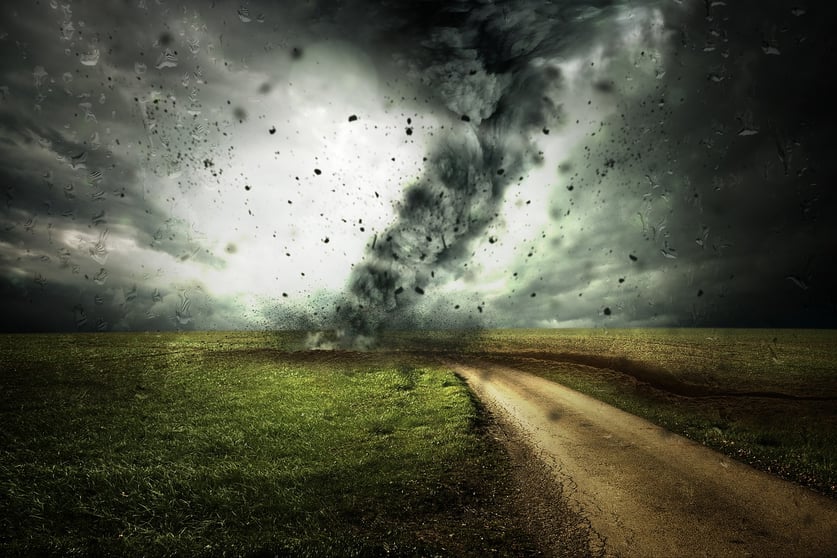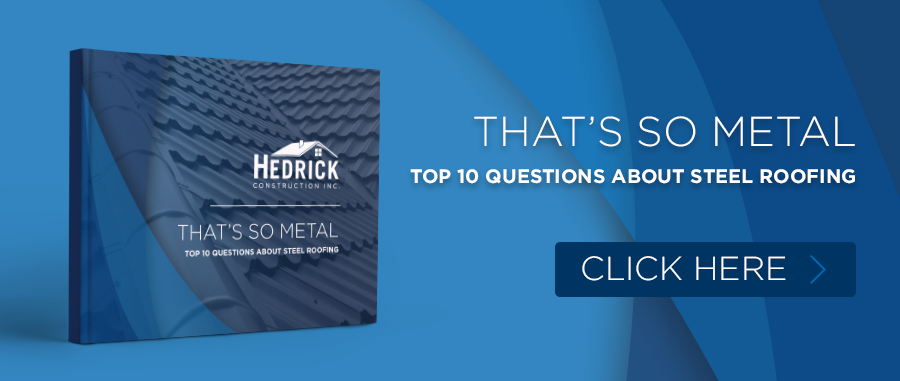
Iowa is part of “Tornado Alley” in the United States. The state sees an average of 48 tornadoes each year, most occurring in the spring-to-fall tornado season. It’s vital that you take precautions to protect your family from harm and ensure you’ll be safe during a tornado, but what about your home? While homeowners insurance may cover tornado damage, depending on the scope of your policy, here following these tips can help you reduce your home’s vulnerability to tornado damage.
Tornados: The Basics
A tornado is "a violently rotating column of air, [hanging below] a cumuliform cloud … and often (but not always) visible as a funnel cloud." Technically, in order for a vortex to be classified as a tornado, it must be in contact with the ground and the cloud base. However, high winds and rain often accompany tornados before and after a funnel cloud is visible; these intense thunderstorms that form in conjunction with tornados often include hail and lightning. Tornadoes can last from several seconds to more than an hour, but the accompanying significant weather dangers can last much longer.
The type and severity of tornadoes are classified using the Enhanced F scale, rated from F0 to F5 (with F5 being the strongest and most dangerous). Tornadoes designated as F0 and F1 can have 3-second wind gusts of up to 110 mph but generally only result in minor damage like broken tree limbs and blown-off roofing shingles. F2 and F3 tornadoes can have wind speeds of up to 165 mph, which is strong enough to overturn cars and mobile homes, tear the roofs off houses, and twist and uproot trees. Common tornado damage includes ripped off, cracked, or dented siding or roofing shingles, broken windows, and ruined gutter systems.
F4 and F5 tornados are the strongest and most deadly, with wind speeds recorded up to 261 mph. They can measure over a mile wide, causing catastrophic damage to entire communities by leveling homes or ripping them right off their foundations and hurling vehicles and debris with deadly force. While these account for only 1 percent of recorded tornados, they are credited with more than 70 percent of tornado fatalities.[1]
How to Prepare Your Home for Tornado Season
Structures built to meet or exceed current model building codes for high-wind regions have a much better chance of surviving tornados and other violent windstorms. The Standard Building Code (written and updated by the Southern Building Code Congress International, Inc.) is one source for guidance on building recommendations that help ensure your home can withstand the fierce winds that accompany a tornado. Although no home can withstand a direct hit from a severe F4 or F5 tornado, solid construction and products rated for high-wind use can help you home withstand many of the more common storms. Storm doors can help protect your exterior doors from hail, winds, and flying debris. Steel siding is long lasting, durable, fire- and moisture-resistant and environmentally friendly. It is more resistant to riping off, cracking, buckling, or otherwise failing in a severe weather event. Extra-durable windows can better resist impact and wind damage.
Metal roofing products, including stone-coated steel shingles, offer some of the best overall choices for tornado resistance. These products resist damage better than traditional shingles. They are able to withstand winds up to 120 mph due to both their strong material structure and their construction: the metal panels are installed in an interlocking, overlapping pattern and securely screwed down in an “x” pattern. A steel roof is also highly resistant to fire; you may be surprised to learn it actually reduces your chances of damage to your roof or home in the event of a lightning strike. Your insurance companies might even offer discounted premiums for replacing your asphalt shingle roof with a more durable metal option.
Hedrick Construction can help you prepare for the Iowa storm season with our guide to severe weather. Replacing your roof with high quality stone-coated steel roofing or helping you strengthen and fortify your existing roofing. We can also help you put your life back together after a storm, working with you and your insurer to repair or replace damaged roofing, siding, gutters, and windows after a storm. Contact us today to get started. 
[1] http://www.mnn.com/family/protection-safety/stories/safety-precautions-for-tornadoes







Comments